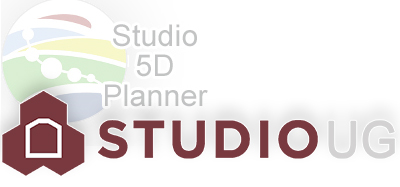|
|
Studio UG vs Studio 5D Planner Transitioning from S5DP to Studio UG |
Studio UG vs. Studio 5D Planner

Studio UG is the successor to Datamine's Studio 5D Planner application.
Both products are built around the sturdy Datamine Studio engine.
Background
Studio 5D Planner's own predecessor, Mine2-4D, was originally written as a script for Datamine Studio 2. Over time, this script grew into the fully-featured Studio 5D Planner toolset. As a script, Studio 5D Planner would access core Studio functionality using a custom 'COM interface' (which can be considered a digital switchboard that plugs scripted functionality into the main engine - all system traffic flows across this interface). The disadvantage of this method is that Studio 5D Planner could not directly access the tools that Studio's capable engine provides without additional engineering effort.
What this meant is that, in addition to a potential performance overhead of sending data from a script to the native Studio environment (and sending information back over the same interface), the process of engineering for Studio 5D Planner was more complex. Because of the script-engine isolation, it also meant that solutions developed in the scripted world of Studio 5D Planner weren't immediately available to other Datamine products and vice versa.
Enter Studio UG and these barriers are broken down. Studio UG is a fully integrated function within the Studio engine framework, with full access to everything Studio products have to offer. Development is more efficient, which means faster, funkier features can be fast-tracked to our valued clients in less time than ever.
Studio UG builds on the strengths of Studio 5D Planner, and is Datamine's focussed underground planning solution.
Process Comparison
The design ethic for Studio UG is "guided but flexible". Moving away from the menu-heavy approach of Studio 5D Planner, Studio UG encourages a workflow that permits schedule experimentation without the overhead of starting from a fresh canvas each time you want to investigate a new approach, or when your operational requirements or constraints change (as they do).
This introduces a key difference between Studio 5D Planner and Studio UG with regards to data processing; in Studio UG, it's a lot simpler to set up and connect design definitions and you have the added advantage of being able to specify multiple models per project, have multiple files of the same design type, carry out partial schedule updates, set up your conventions, definitions, filters, attributes and everything else in combination with other setup tools (every Studio UG tool 'listens' to what is happening, in real time, in the other tools) and a host of other significant improvements.
The following diagram describes how Studio UG streamlines the process of taking design data through to an exportable schedule:

|
|
Related Topics |
|
|
Welcome to Studio UG |


